Breathe Easier Naturally with 6 Ways to Purify the Air in Your Home + VIDEO {Pure}
Breathe Easier with These 6 Natural Ways to Purify the Air in Your Home!
You can find more mindfulness guidance, healthy recipes, lifestyle tips and more on my YouTube Channel!
Affiliate Disclosure & Privacy Policy (please review our complete policy here): we use affiliate links and analytics on our website, social media posts and newsletter which utilize cookies placed on your browser to track sales activity. This post is NOT sponsored but may contain affiliate links. When you click an affiliate link on our Website, a cookie will be placed on your browser to track sales activity. When you click these links and purchase a product, we may receive a small commission to help support the maintenance of our website, but the price is the same for you. Users can control the use of cookies at the individual browser level. Please review our complete privacy policy here. Thank you for your support! These statements have not been evaluated by the FDA and should not be considered medical advice or treatment. Please consult your personal health provider before making any changes to your diet or lifestyle.
There has been a lot of emerging science about air pollution recently and how to purify the air in your home. Since it is Earth Month I wanted to share some SimplePureWhole strategies for living a cleaner, greener life starting with how you can purify the air in your home!
Most of us spend the majority of our time indoors at home or work. In fact, research indicates that people spend approximately 90 percent of their time indoors. Unfortunately, a growing body of scientific evidence has indicated that the air within homes and other buildings can be 2 to 5 times more polluted than outdoor air since pollutants become trapped in the limited space and recirculate repeatedly when you fail to purify the air in your home.

Overall, the World Health Organization estimates that 92% of the world’s population lives in places where air quality levels exceed safe limits. Overall a toxic environment is responsible for at least 1 of every 4 deaths reported worldwide with air pollution being a major contributing risk.
But the danger is not just outdoors. For example, a recent study suggests that several substances given off by common household products are increasingly dominant sources of pollution–both indoors and outdoors (McDonald et al, 2018). These include:
- personal-care products such as fragrances and perfumes,
- paints and solvents,
- aerosol sprays,
- cleaning agents and disinfectants,
- air fresheners,
- pesticides,
- fuels,
- dry-cleaning chemicals,
- building materials,
- copier fluids and printing inks,
- glues and adhesives and
- other chemical-containing agents which emit petroleum-bassed odorous substances known as volatile organic compounds (VOCs).
Poor indoor air quality has been linked to short-term health effects like headaches and fatigue as well as chronic conditions like asthma and cardiovascular disease. Given these concerns, the EPA ranks indoor air pollution as one of the top five environmental risks to public health and suggest taking action to purify the air in your home.

6 Ways to Naturally Purify the Air in Your Home
To breathe easier and keep the air inside your home and workplace pure naturally, try these strategies!
Invest in a High-Quality HEPA Air Purifier(affiliate link)
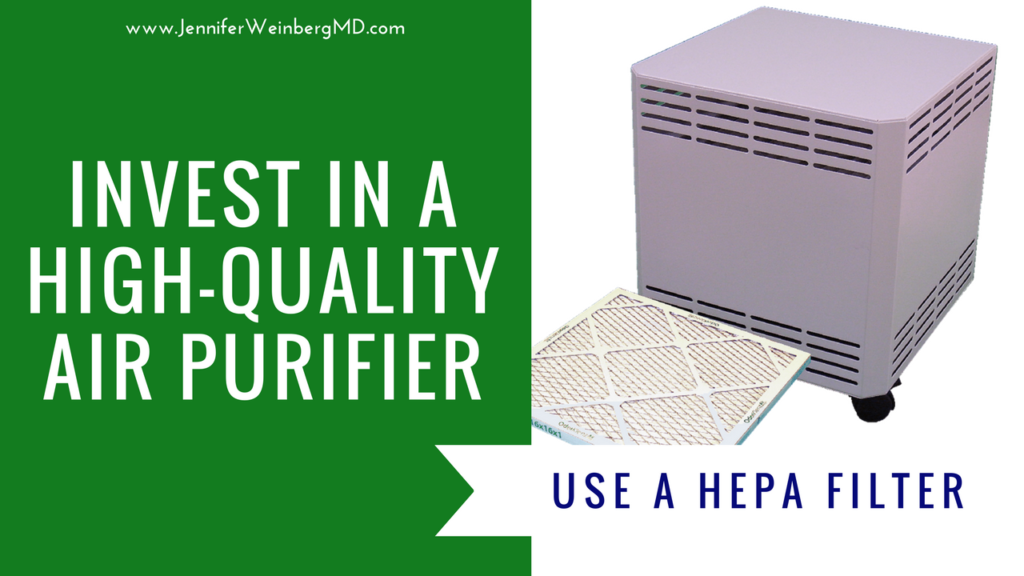
One of the most effective ways to protect your family and purify the air in your home is to invest in a high-quality HEPA air purifier. HEPA filters act like sieves to ensnare contaminants and remove them from the air inside your home. HEPA filters in will trap 99.97 percent of normal dust particles that are 0.3 micrometers or larger.
Depending on the square footage of your home, you may need more than one air purifier to cover any areas where you are spending extended amounts of time or you may choose a whole-house air filter within your HVAC system like this one.
 I use this Austin Air Purifier (affiliate link) in my home and office that uses 5 stages of filtration including a high-quality HEPA filter that traps 99.97% of particles as small as 0.3 μm (dust, particulate, allergens, pet dander, microorganisms, and more).
I use this Austin Air Purifier (affiliate link) in my home and office that uses 5 stages of filtration including a high-quality HEPA filter that traps 99.97% of particles as small as 0.3 μm (dust, particulate, allergens, pet dander, microorganisms, and more).
In addition to air filtration, cleaning regularly with nontoxic products can reduce indoor pollution. Wipe down surfaces and vacuum your home frequently with a HEPA filter equipped vacuum cleaner. It can also be helpful to remove your shoes at the door and change your clothing to avoid tracking in pollutants.
- Read this guide to purchasing a high-quality portable air purifier that will work for your needs.
- Replace your whole house HVAC filter with a HEPA-rated replacement filter like this one.
- Choose a HEPA-equipped vacuum cleaner (affiliate link) and use it frequently.
Fill Your Home with Air-Purifying Plants
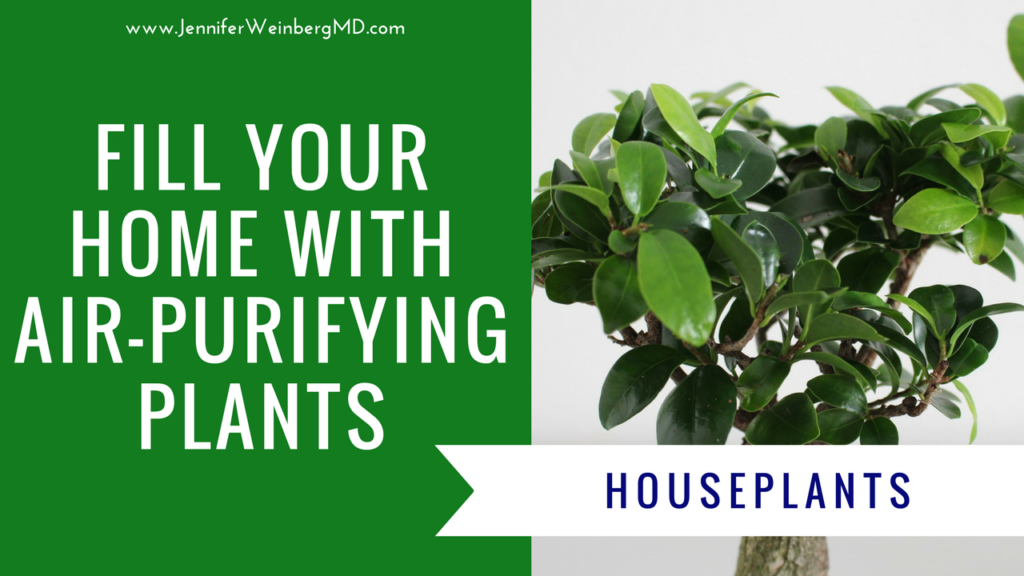
One of the most economical ways to purify your air and bring more nature into your life is to fill your home with air-purifying plants (Claudio, 2011). Many plants are capable of absorbing several types of common toxicants and removing them from the environment.
Select organically-grown air-purifying plants. Some of the top plants for helping to purify the air in your home naturally include:
- Acreca palm
- Aloe vera
- Spider plant
- Lady palm
- Dracaena
- Dwarf date palm
- Peace lily
- Ficus
- English ivy
- Boston fern
- Bamboo palm
*NOTE: some plants are toxic to pets and small children. For example, sago palms are toxic to both cats and dogs and all lily varietals are especially toxic to cats. Eating any kind of plant has potential health effects for your pets and children so please be sure to keep potted plants out of reach and only keep houseplants that are deemed non-toxic in your home.
Use Activated Charcoal
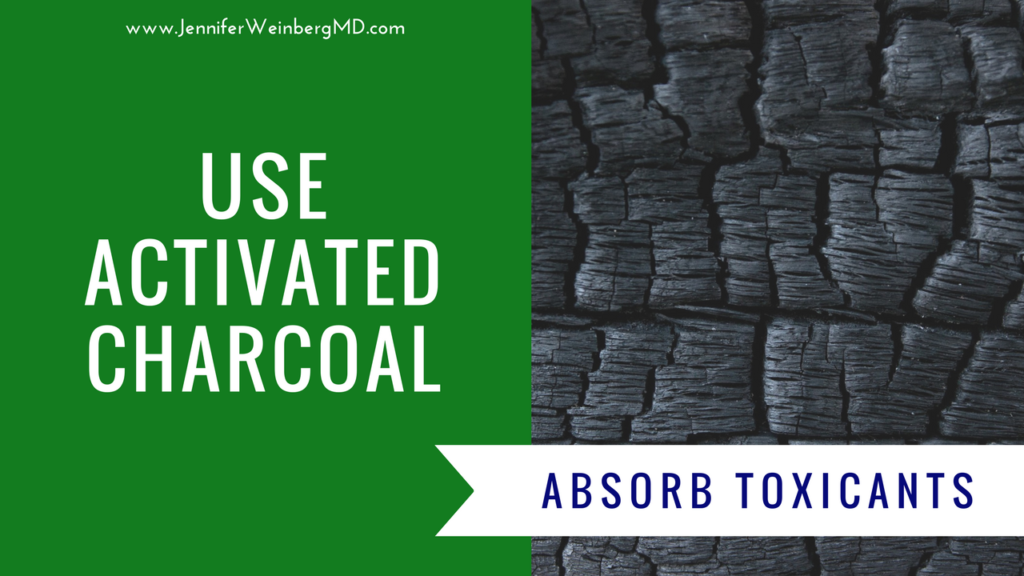
Activated charcoal is another way to absorb toxicants and naturally purify your indoor air. It is an odorless, highly-absorptive substance made from various compounds like bamboo, wood or coconut shells. You can reactivate and recharge the charcoal in the sun for a couple of hours on a monthly basis to reuse it and compost it once it reaches the limit of its lifecycle, so it is eco-friendly as well.
A study by the U.S. Department of Energy found that filters using activated carbon removed 60 to 70% of ozone from air compared to those without charcoal. In another study, activated carbon filters were found to be capable of removing up to 80% of volatile organic compounds and up to 30% of formaldehyde, a common air pollutant given off by fabrics and furniture.
- Opt for organic coconut (affiliate link) or bamboo carbon charcoal (not coal).
- You can purchase deodorizer bags of charcoal like these or buy bulk charcoal (affiliate links) to distribute as needed.
Take Off Your Shoes
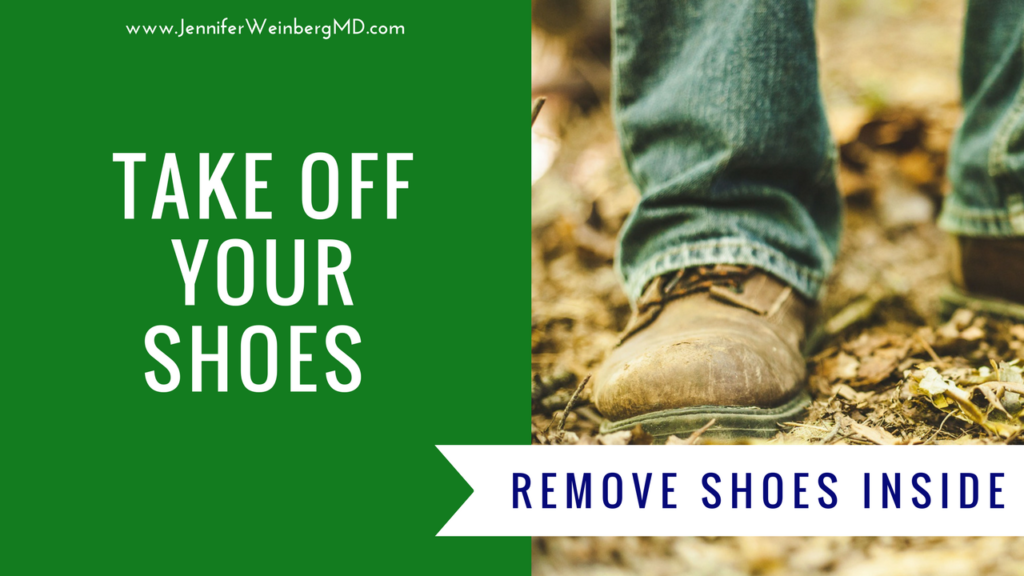
Shoes can carry coal tar, pesticides, fungal spores, lead dust, pollen, industrial toxins and other irritants from outdoors into your home where they can recirculate in your indoor air. Studies show that placing an effective doormat to clean the bottom of shoes before entry or removing outdoor shoes in the house can significantly reduce the number of contaminants tracked inside.
- Place a shoe rack with a bench (affiliate link) at your door and get into the habit of always removing your outdoor shoes before entering your home.
- Enact a “no outdoor shoes in the house” policy and keep reusable, washable shoe covers at your door for guests.
Test for Radon
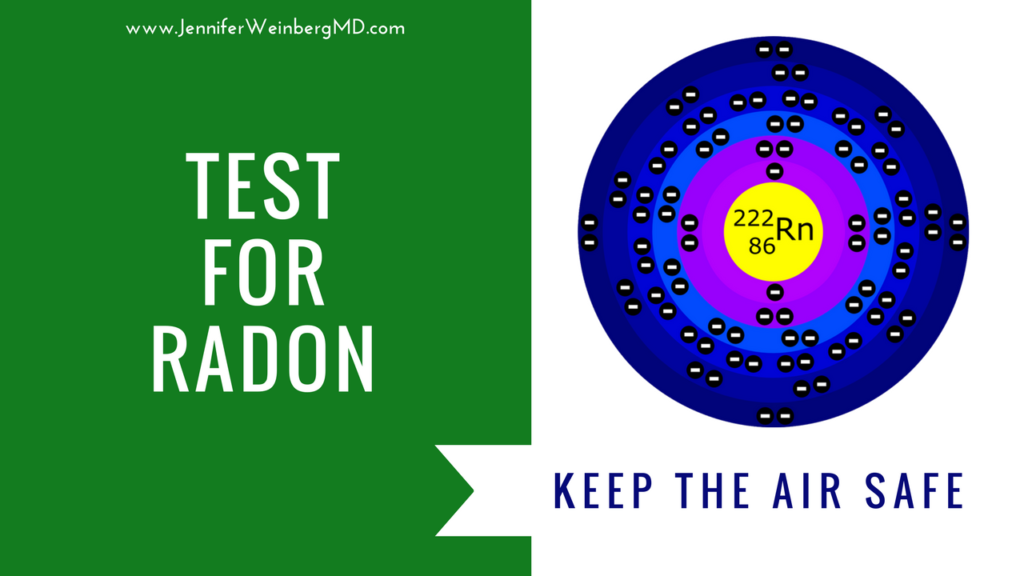
Radon is an invisible, odorless, radioactive gas which is produced by the decay of naturally occurring uranium in soil and water. Radon is the number one cause of cancer among non-smokers, contributing to around 21,000 lung cancer deaths every year. Some areas have more naturally-occurring deposits than others, although radon can be found all over the US.
- Evaluate the risk of radon exposure in your home with this US Map of Radon Zones from the EPA.
- Since you cannot see or smell radon, you need to test your home for radon with a simple home test like this one (affiliate link). There are commercially available do-it-yourself test kits for both short- and long-term testing or you can hire a qualified tester to do the testing for you. The EPA recommends testing all homes below the third floor for radon and implementing home radon reduction systems if elevated levels are detected.
- Radon in water may be released into the air when water is used for showering or other household purposes. If your water comes from a private well, you may also want to test your water supply for radon.
Service Your Appliances
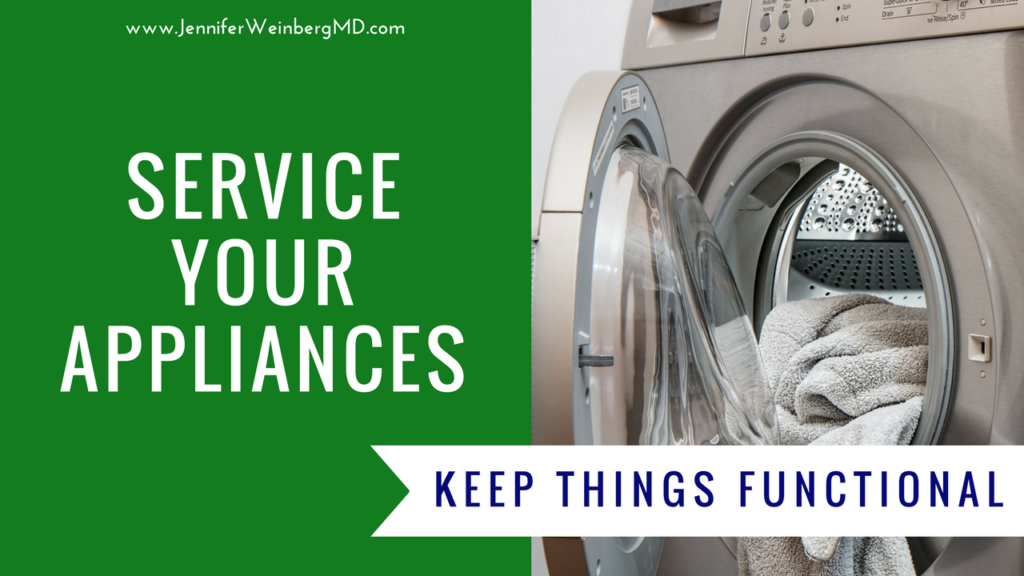
Poorly-maintained appliances like your furnace, space heater, hot water heater, natural gas heater, dryer or stove and other fuel-burning appliances can leak carbon dioxide or nitrogen dioxide which pollute the air inside your home.
- To reduce your exposure, have your appliances serviced per the manufacturer’s recommendations to reduce potential indoor air pollution and maintain safe function.
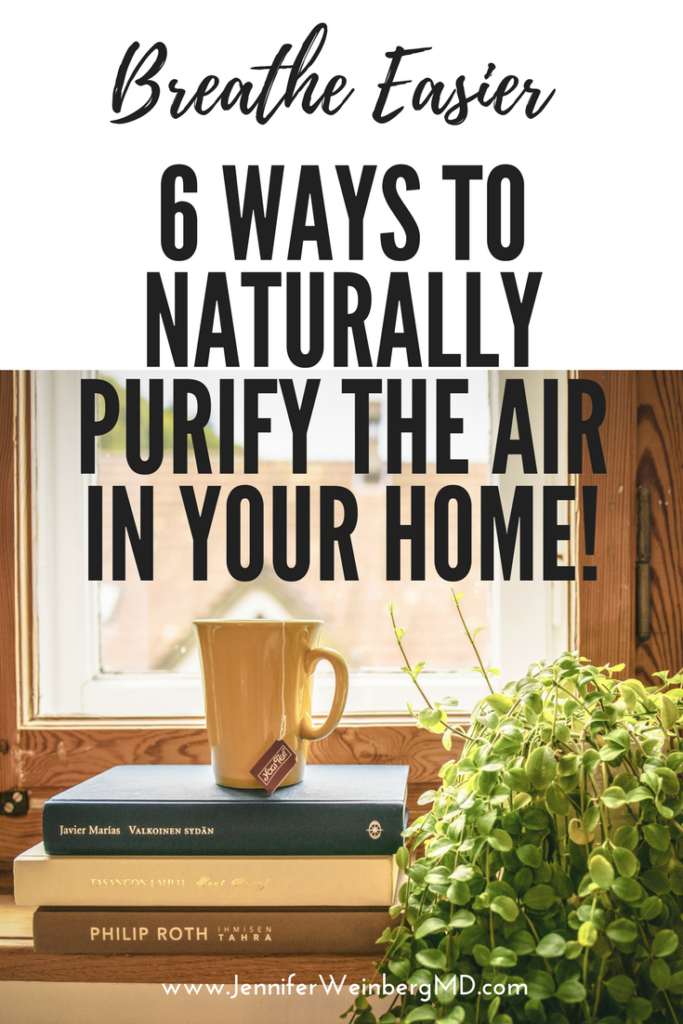
What is your favorite way to improve the quality of the air inside your home?
Do you use an air purifier?
I would love to have you in my Insider’s Community! Join for free and receive your FREE Chapters from The Whole Cure: 52 Essential Prescriptions to Overcome Overwhelm, Reclaim Balance and Reconnect with a Life You Love! You can pick up a full paperback or Kindle copy on Amazon (affiliate link) for a wealth of insights, exercises and complete toolkit to help you uncover your true passions, authentic purpose and calm confidence as well!
To keep building your healthy lifestyle and best self through everyday habits, take the next step today to commit to a life you truly love and feel fully alive!
-
Pick up a copy of The Whole Cure (affiliate link) to build resilience and manage stress in a way that makes life flow with greater ease and joy!
-
Access guided relaxation exercises utilizing the power of the breath and mind here.
-
Join my next online group Whole Cure Lifestyle Transformation Programs to build more powerful coping strategies and skills for meaningful stress management and a calmer life! Contact me to form your own guided online group or register for the next scheduled online program!
Medical Disclaimer: Information provided in this post and related resources are for informational purposes only. Jennifer Weinberg is not providing medical advice, diagnosis or treatment information. The information is NOT intended as a substitute for the advice provided by your physician or other healthcare professional. Every body is unique so be sure to check with your healthcare professional before making any dietary or lifestyle changes taking any medication or nutritional supplement or using any treatment for a health issue. Do not use this information provided for diagnosing or treating a health problem or disease. If you suspect you have a medical problem please contact your healthcare provider promptly and do not disregard professional medical advice based on anything on this website. This website and related resources are not intended to diagnose, treat, cure or prevent disease and do not create a doctor-patient relationship between you and Jennifer Weinberg. These statements have not been evaluated by the FDA. These products are not intended to diagnose, treat, cure, or prevent any disease.
This post was shared with: Home Matters Link Party, Healthy and Happy Living Link Party, Friendship Friday Blog Party, SITS Saturday Sharefest

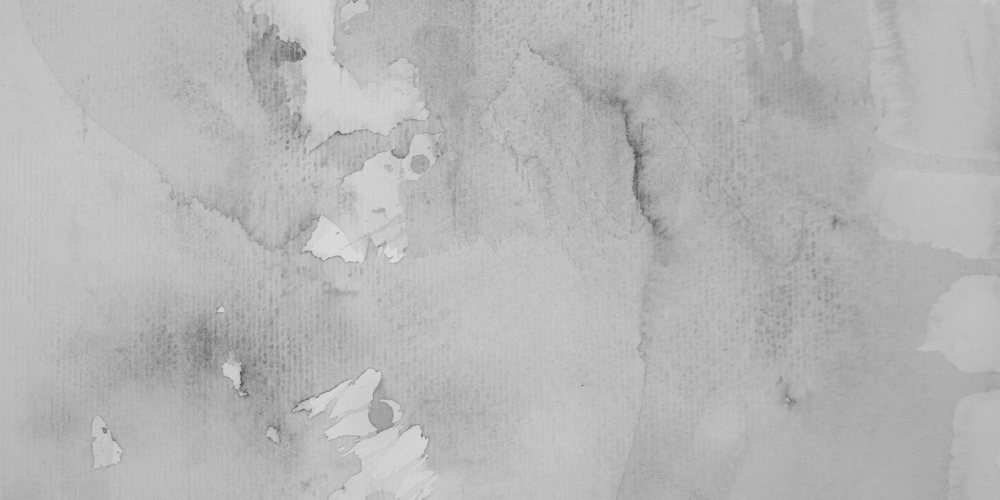
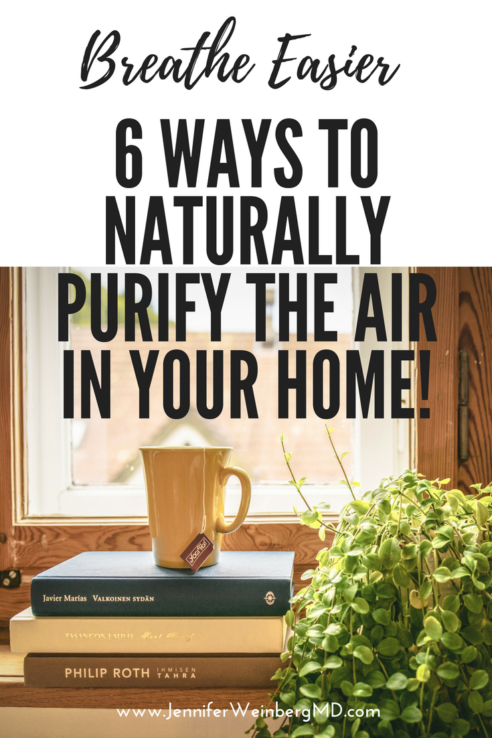

Comments
Cho
My family has always been strict about taking outdoor shoes off at the door. I like your other tips as well!
Dr. Jennifer L. Weinberg, MD, MPH, MBE
Thank you Cho! Taking off your outdoor shoes indoors is such a great habit to have. I hope the other tips help you as well!
Lin
I have been searching for an air purifiier that will help my severe allergies. I will have to look further into this one from Enviroklenz. Thank you!
Dr. Jennifer L. Weinberg, MD, MPH, MBE
Thank you for stopping by Lin! I hope you find a solution that helps your allergies. The air purifier can be really helpful in my experience.
Roseann Hampton
I used some activated charcoal to get cat smell out of my mom’s house before we sold it. It worked wonderfully! I didn’t realize you could recharge it though – I just threw it away.
Dr. Jennifer L. Weinberg, MD, MPH, MBE
Thank you Roseann! I am glad the charcoal worked so well for you.